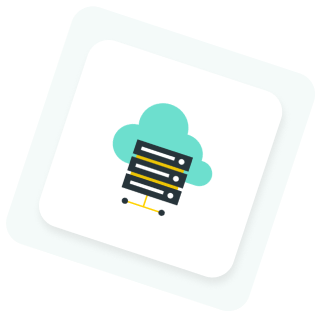Every company wants to improve operations and maximize profits and efficiency, and using electronic procurement, or e-procurement, can be a convenient way of achieving this. When companies are able to buy and sell goods online, they have access to a wider range of suppliers and buyers and can complete transactions more quickly.
Let’s run through what e-procurement is, how the process works, and some benefits of using it.
What is e-procurement?
E-procurement is a business-to-business (B2B) process where companies buy and sell goods and services via the internet. Unlike e-commerce, however, this process occurs in a supplier’s closed system, meaning only their registered users can access it. E-procurement opens up a direct link between preferred suppliers and customers and facilitates processes from supplier evaluation to contracts to bids, purchase orders, and invoices.
While e-procurement has been around since the 1980s, it’s much more modern these days, with automation of various activities and no manual paper processes (like physical purchase orders). There are also a wide range of specialized software options to connect buyers and suppliers. (As an example, Sastrify can be used as an e-procurement software platform to connect companies with SaaS providers!)

E-procurement process
The steps in the e-procurement process depend on the company and situation, but they generally follow this structure:
1. E-informing
Also called online information transferring, e-informing is the exchange of information between two parties, typically between internal teams and external suppliers in this case. This goes on throughout the process and is essential when aiming for a mutually beneficial outcome.
2. E-sourcing
Online sourcing, or e-sourcing, is the step in the process when the company defines their requirements and works on pre-qualifying all potential suppliers.

3. E-tendering
Also called online tendering, step 3 is when the company makes requests to the pre-qualified suppliers for information, proposals, and/or quotes. This helps the company evaluate and fairly assess all their options.
4. E-auctioning
Online auctioning, or e-auctioning, is essentially what it sounds like. This is when both parties go back and forth to set their contract terms and negotiate prices. There could be alternative ways this can go if there are more than two parties involved:
- Multiple buyers might be trying to get a contract with the supplier by paying more than other offers
- Multiple suppliers might compete to get a contract with the buyer by offering a lower price than other sellers (e-reverse auction)
5. E-ordering and payment
Step 5 is online ordering and payment, when requisitions and purchase orders are created and the buyer receives their ordered goods or services. The company will then add the contracts to a digital catalog (or e-procurement software) so team members can access them in the future to review details or make another order.

6. Analytics
In many cases, companies will continually analyze their e-procurement processes and outcomes to ensure they are making the right decisions. This involves looking at spending and contract terms and seeking to correct issues if needed.
E-procurement benefits
There are a host of benefits to be gained from utilizing e-procurement. Here are just a few:
- Automate processes & save time
No more paper pushing, please. Automating processes with e-procurement – including in areas like transactions, reporting, and contracts – can save time and shorten procurement cycles.
- Save money
Automation and monitoring tools in e-procurement solutions help achieve cost savings and decrease expensive mistakes that can happen with paper processes.
- Access a larger selection of goods and services
Keeping all procurement processes online opens up the array of suppliers (and therefore products/services) you have access to.
- Improve reporting and transparency
E-procurement offers better tracking and reporting on procurement data, so you can keep an eye on key metrics and trends. Since everything is centrally managed, it also improves transparency for all stakeholders.
Using e-procurement to improve operational efficiency
Most companies are constantly on the lookout for ways to streamline operations and increase profits. For many, e-procurement has proven to be an effective tool to reach these goals.
Whether you use e-procurement to increase your selection of suppliers, automate processes, or simply to save time, it’s important to have the right processes and platforms in place to ensure successful outcomes. For your SaaS procurement needs, Sastrify can help you get full visibility into your tool stack with all subscriptions in one place and start exploring new solutions from an extensive database.
Book a call with one of our procurement experts and start saving time, money, and energy today.

















